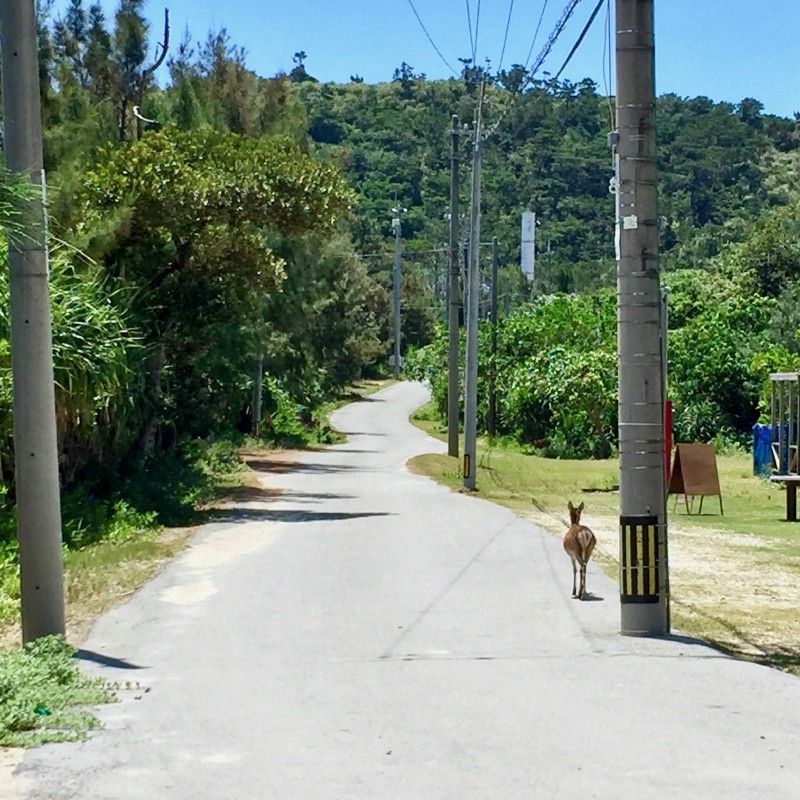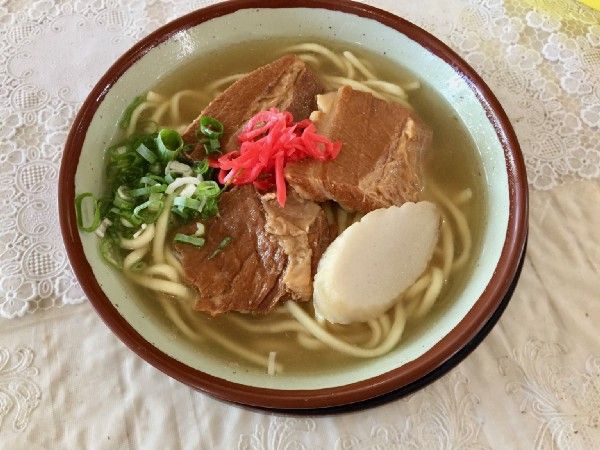Zamami Island's Love Story

Zamami Island and Aka Island have a love story at sea that spans three kilometers.
There is a bronze statue of a dog named Marilyn on Zamami Island on the way to Ama Beach. Marilyn sat dazedly, her head tilted 45 degrees, gazing firmly towards Aka Island.
At first I couldn't figure out how there could be a statue of a dog on the seashore. People not only offered it flowers, but also filled its feet with shells. Later, I learned that it was related to a movie and a love story.
In front of the dock of Aka Island, another bronze dog raised its head slightly, stood and looked into the distance gently, as if to check whether the person it was waiting for was coming. The dog's name is Shiro, and it is Marilyn's lover. The two dogs fell in love with each other after they met on Zamami Island. Unfortunately, the good times were not always the same (the same is true), Shiro's owner decided to move to Aka Island to open a homestay (the trend of homestays started in Okinawa 30 years ago), So much so that they are forced to fall in love at a distance.

True love has no distance, and the more than three kilometers of strait between Zamami Island and Aka Island cannot stop their passion. In order to meet his beloved Marilyn, Shiro swims every day from Nishibama Beach on Aka Island to Zamami Island.
It's a 1988 movie " Want to meet Marilyn ni aitai ", because the movie made Zamami and Aka Island famous, and the amazing beauty of Kitahama Beach was exposed.
Smaller and more pristine than Zamami Island, Aka Island is famous for Kitahama Beach, Kerama Deer and Aka Bridge. It takes 15 minutes by boat from Zamami Island and can be reached at 300 yen. Follow the tree-lined road to the right of the port to reach Beihama Beach.
Compared with Furzamami Beach, Kitahama Beach has a stronger contrast of sea water levels, and it is an overwhelming beauty that captures travelers at a glance. Kitahama Beach has larger coral reefs and tropical fish than Furuzamami Beach. There are also lifeguards, parasol rentals and toilets. However, on Ajia Island, where supplies are scarce, everything is relatively simple and more expensive.

Once I went ashore to go to the toilet and ran into a shy Kerama deer. As soon as they turned their heads, they appeared beside the road grazing, silently, like elves. However, as long as they move a little, they are like radars, and they approach the bushes alertly, looking back as they walk.
The observation deck behind the entrance to the beach is best for a view of the beauty of Kitahama Beach, but like the observation deck on Zamami Island, the observation deck on Kitahama Beach is rarely visited. On the way back to the pier, under a forest of trees that looked like pineapples overgrown, I encountered another Kerama deer.

From the Internet, I learned that the beach near the pier on Aka Island is very suitable for snorkeling and has beautiful corals. On the return trip, when I passed there, the tide had receded and a Japanese girl in snorkeling gear was resting on the shore. I asked her are the corals and fish in the water beautiful?
"It's beautiful," she said.
So, I went into the water again.
I ate a delicious bowl of Okinawan noodles just before a lunch break at a restaurant, and to my surprise the bowl was quite affordable. After the meal, I met the French couple who arrived at Aka Island on the same boat, so the three of them had drinks and chatted together. When the next boat arrived, I was the first to return to Zamami Island.
At night, I have a strong desire to have a drink at the bar, but no matter how I look, I can't find a place where I can eat and drink at the same time. The entrance of one traditional Japanese bar said that it had been reserved, and the other was not open. It was a deserted night when it was difficult to even eat, and I had to go back to my old place, Ajisai, to fill my stomach.
Ajisai is more of a private chef than a restaurant. Its dining place is in the living room of the boss's house. Two low tables are placed on the tatami, next to an old leather sofa at home, and a beer poster of a young bikini woman is posted on the wooden wall. As soon as you look up, the ancestral tablet and photo of the boss's family are at the top. The restaurant is run by the middle-aged owner alone. When there are no guests, he sits in the corner of the door and watches TV. When the guests arrive, he enters the kitchen and starts cooking. It is a small shop that cooks everything from scratch. Patience is required when patronizing, but the food there will definitely satisfy the hungry stomach of travelers.

After dinner, I went to the 105 supermarket to buy a can of beer to relieve the depression that there was no bar to go to. Just as I was about to cross the bridge, a Japanese and American on a bicycle asked me where there was a bar? They, like me, couldn't find a place to sit and have a drink. After I told them to go around the village, I found out that there is only one bar in the whole Zamami village where you can drink. However, the small bar had no customers. They stress that it's okay, as long as you can have a drink.
"Let's have a drink together?" asked the American Simon.
"No, I already have alcohol." I raised my hand to signal the beer I just bought.
"Take it with you, don't worry about no one drinking." Simon said.
Just like that, the three of us headed towards the genteel-style Karii bar.
Like my work? Don't forget to support and clap, let me know that you are with me on the road of creation. Keep this enthusiasm together!

- Author
- More